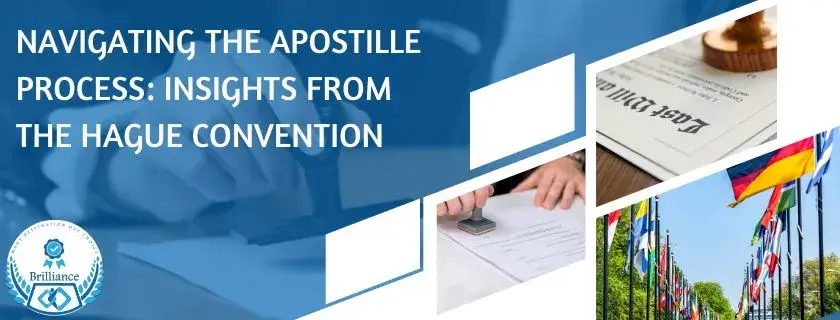
Navigating the Apostille Process: Insights from the Hague Convention
The Apostille Process refers to the procedure that comprises of a set procedure to ensure that the record used in international transactions are genuine and recognized globally. It is governed by the Hague Apostille Convention, a treaty that was signed in Hague, in 1961 by member states of the convention to agree on the acknowledgement of the legal effectiveness of documents signed in any member state territory. Let us have an overview on the aspects of Apostille process such as need and procedures or step by step.
Apostille Process is therefore very important in fostering international business and the general undertaking of legal transactions. Since it does away with other forms of confirmation, the verification process is made easier and is not as time consuming and costly as the legalization of documents. Therefore, these documents provide assurance of a law to businesses and persons wherever they carry out their transactions.
For a document to be authenticated by an Apostille there are some conditions that have to be fulfilled. These requirements differ depending on the country of the utilisation of the document. However, in general, the following conditions must be met:
1. Original Document:
The Apostille is possible only with the copy of the document which was issued to the owner. Photocopies, scans or any form of copies are required.
2. Legal Validity:
This is in respect to the fact that the document should have been issued by an authority or an institution that is legally entitled to issue the same. It has to be also a legal document in the country it was issued.
3. Language:
Apostille must be produced in an official language of country in which this document has been issued. In case the document is not in the official language of the country which has issued the Apostille then it may be attached with officially certified translation.
4. Legibility:
It has to be written clearly and the Apostille must be affixed to the document firmly. It means anything that is done to the document that deforms it will lead to the rejection of the same.
To apply for an Apostille, follow these steps:
Identify the Competent Authority:
Find the competent authority or agency which deals with the issue of Apostilles in the country of issue. This will most often be the embassy, consulate or an accredited agency for foreign affairs of the said country.
Submit the Document:
Proceed with the following steps, go to the competent authority, take the original document together with other documents if they are required. This may include photocopies of the document’s front and back, Identification Document and payment where necessary.
Apostille Application:
Complete the Apostille application sensibly and specify the title of the document, its purpose and the state where it will be used. The form may require you to sign it if this is the case, do so.
Documentation Review:
When the competent authority completes going through the document, they will evaluate whether the document meets their standards or not. This may involve confirming the existence of its legal standing as well as establishing the capacity of the document to be Apostilled.
Certification and Apostille:
After the approval, the Apostille will be placed by the competent authority at the document. The Apostille is a certificate that ensures that the document is genuine and that it has legal effect in the country that has been prescribed.
Return and Delivery:
The Apostilled document shall be handed to you or be posted at the address you provide. An Apostilled document should be stored and only produced when required to be presented to the concerned country.
Apostille Process is complicated, particularly for people and companies that do not actively participate in international business. But as it has been mentioned here, you can now comprehend the rationale and elementary information on Apostille Process along with the necessary procedures involved. This means by following the guidelines and meeting the requirement one will be in a position to undertake international business and be assured that the documents produced are legal and will be accepted internationally. When implemented in this way, it is easy to sort through the issues involved with document legalization and guarantee that the process is well done.
